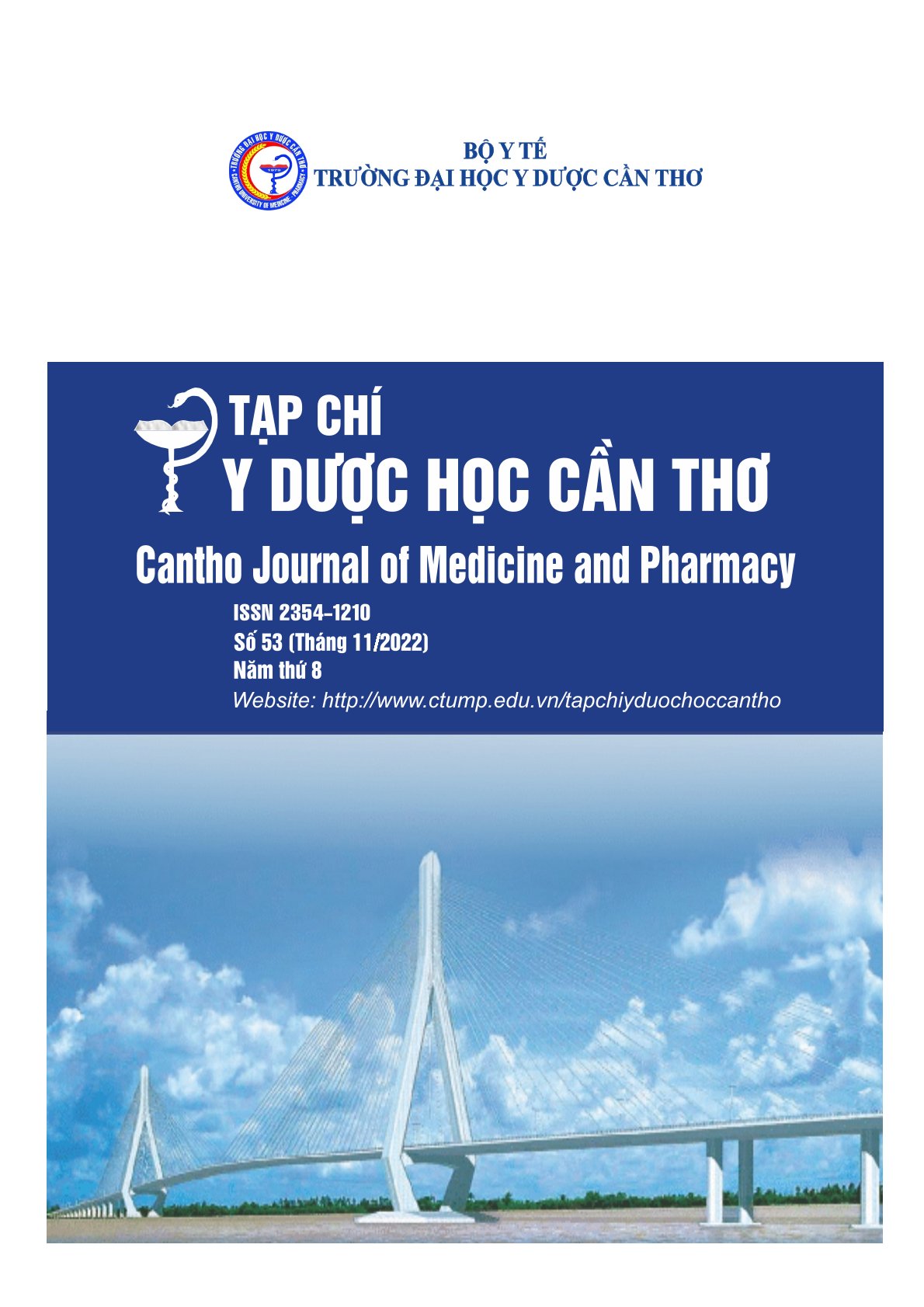SURVEYING ON AN EXTRACTION PROCESS FROM GRAPEFRUIT PEEL AND MODULATING AN APOTHECARY OF DRIED GRAPEFRUIT PEEL EXTRACTS IN THE DIRECTION OF ANTI-OXIDANT
Main Article Content
Abstract
Background: Keeping up with market trends and wishing to reuse waste materials efficiently, our research team is working on building an extraction process from Grapefruit peel and an apothecary of dried Grapefruit peel extracts in the direction of anti-oxidant. Objective: Surveying a process extracting extracts from Grapefruit peel and an apothecary of dried Grapefruit peel extracts. Material and methods: Grapefruit middle pod. Surveying on the extraction conditions: extraction solvent, extraction temperature, extraction time, the number of extraction, and the ratio of solvent: to the material. Evaluate survey results through transcripts and humidity. Modulating an apothecary of dried Grapefruit peel extracts. Results: 70% ethanol gets the highest score (10 points). Survey on extraction temperatures, the highest total evaluation score is 70oC (9 points). The extraction time with the highest survey score is 120 minutes (9 points) while the other times all reach 8 points. The ratio of solvent: to material at 14:1 achieves 12 points on the total evaluation score. When surveying the number of extractions from 1 to 4 times, the number of extractions with 3 times gets the highest score. Based on the survey results for each type of adsorbent excipients in turn according to the other radios, lactose with the ratio of 1:4 obtains the most stable moisture (1.5%). The dried Grapefruit peel extracts test results: a dried mass loss is 1.23%, negative for bacteria, positive for qualitative reactions, and the validated quantification process of total polyphenols. Conclusion: An extraction process from Grapefruit peels is surveyed following conditions: the extraction solvent is 70% alcohol, the temperature is 70oC, the extraction time is 120 minutes, the number of extractions is 3 times, and the ratio of solvent: material is 14:1. Modulating an apothecary of dried Grapefruit peel extracts by lactose in the ratio 1:4.
Article Details
Keywords
extraction process, Grapefruit peel extract, process survey, Citrus grandis
References
2. Bộ Y tế (2013), Sổ tay hướng dẫn đăng kí thuốc - Phụ lục 8: Thẩm định phương pháp phân tích.
3. Lý Thị Thùy Duyên và cộng sự (2021), Nghiên cứu điều kiện chiết xuất naringin từ vỏ Bưởi năm roi (Citrus grandis (L.) OSBECK), Tạp chí Khoa học Trường Đại học Cần Thơ, (57), tr.183-188.
4. Nguyễn Văn Lợi (2013), Nghiên cứu tách chiết và xác định hoạt động học của các thành phần tạo hương trong tinh dầu vỏ Bưởi và vỏ Cam của Việt Nam, Việt Nam J. Khoa học. Technol., 51(2), tr.153. 5. Huỳnh Thanh Minh (2018), Phân tích chuỗi giá trị sản phẩm Bưởi tại tỉnh Hậu Giang, Tạp chí Nghiên cứu khoa học và Phát triển kinh tế Trường Đại học Tây Đô, (4), tr.16-17.
6. Nguyễn Thị Mai Ngọc (2019), Ảnh hưởng của nồng độ dung dịch và điều kiện nhiệt độ lên vỏ Bưởi sấy dẻo, luận văn tốt nghiệp, Trường Đại học Nguyễn Tất Thành.
7. Lê Văn Gia Nhỏ (2020), Thực trạng sản xuất và tiêu thụ ngành hàng Bưởi Năm Roi vùng Tây Nam Bộ, Tạp chí Khoa học và Công nghệ, ISSN 1859-4581(382), tr.135-139.
8. Lưu Thái Quản, Ngô Anh Đức, Phan Minh Tú, Đỗ Thị Hồng Xuyến (2022), Khảo sát quy trình chiết xuất dịch chiết từ vỏ quả giữa Bưởi và quy trình bào chế cao khô vỏ quả giữa Bưởi (Citrus grandish (L.) Osbeck), Đề tài nghiên cứu khoa học cấp trường của sinh viên, Trường
Đại học Y Dược Cần Thơ, Cần Thơ.
9. Đỗ Dương Phương Thảo (2006), Nghiên cứu chế biến vỏ Bưởi tẩm đường, Luận văn tốt nghiệp, Trường Đại học An Giang.
10. Nguyễn Hoài Thương (2014), Xây dựng quy trình chiết xuất Naringin từ vỏ quả Bưởi Citrus grandis osbeck, họ Cam (Rutaceae) thu mua ở Cần Thơ, Đề tài nghiên cứu khoa học của sinh viên, Trường Đại học Cần Thơ, Cần Thơ.
11. Nguyễn Thị Tuyết, Trần Thị Duyên (2019), Nghiên cứu tách chiết chất màu anthocyanin từ hoa Đậu biếc (Clitoria ternatean), Tạp chí Công nghiệp Nông thôn, (36), tr.81-92.
12. Đỗ Thị Thúy Vy (2020), “Ảnh hưởng của nồng độ ethanol và tỉ lệ dung môi sử dụng đến hiệu quả trích ly các hợp chất có khả năng kháng oxy hóa từ bột vỏ Bưởi năm roi”, Tạp chí Công Thương, (24), tr.51-56.
13. Huỳnh XP, Lưu MC, Trần TXN, Nguyễn NT, Bùi H Đăng L, Bạch LG, Nguyễn VM, Trần TT (2021), Chemical composition and antimicrobial activity of essential oil extracted from pomelo (Citrus maxima (Burm.) Merr.), Hueuni-jns, 130(1C), pp.75-83.


